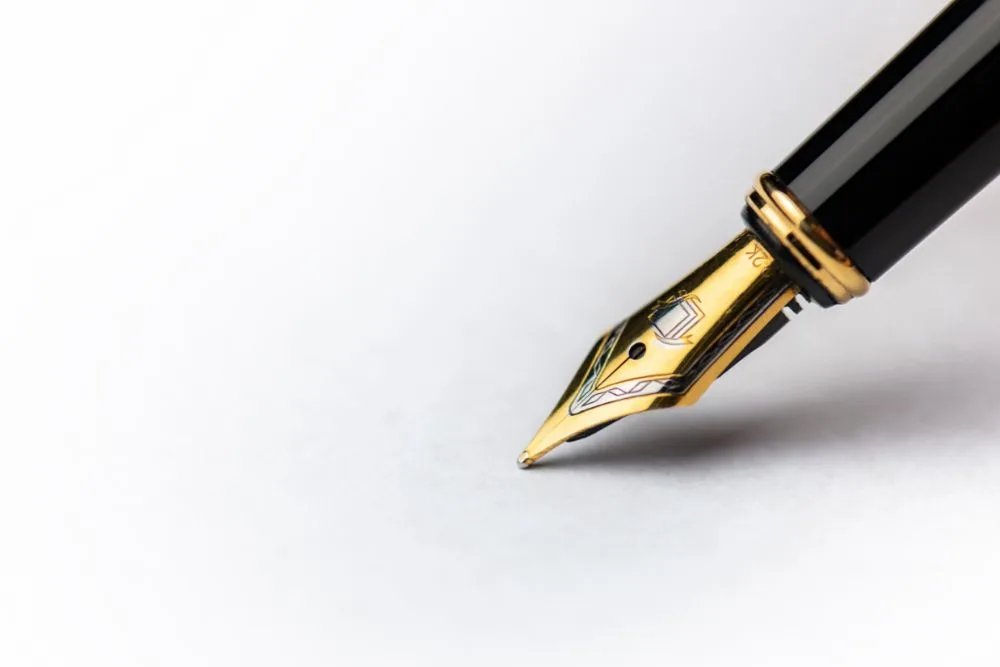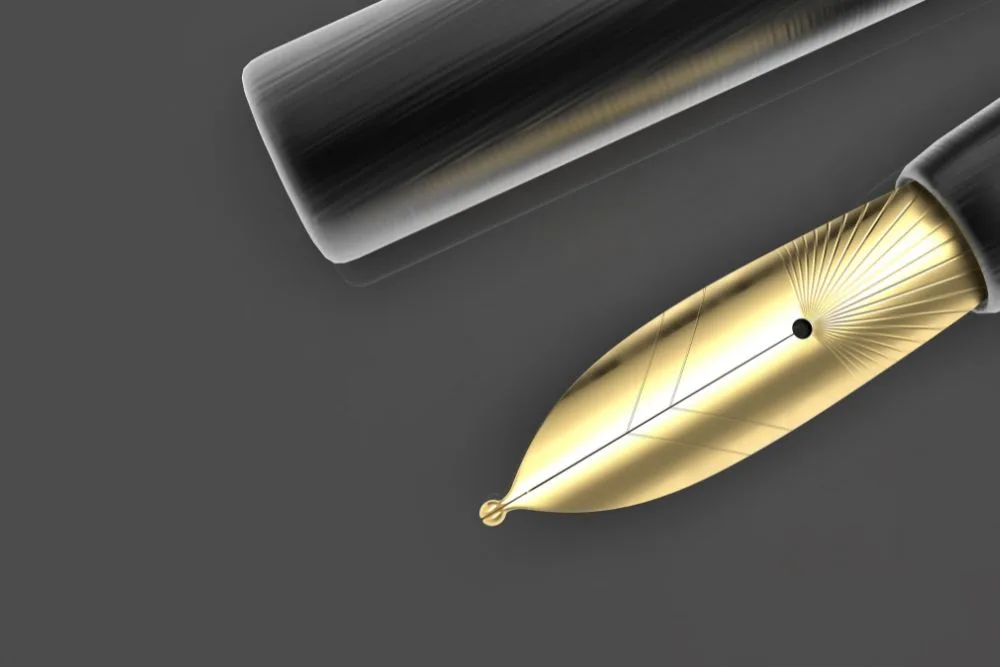The art of pen repair has been around for many years, catering to collectors and enthusiasts who value the beauty and history of their writing instruments. In today’s digital age, a classic pen still holds a special place in the hearts of many, creating a niche market for those passionate about restoring and maintaining these treasured items.

If you’re considering starting your own pen repair business, this article will guide you through the essential steps to turn your passion into a profitable venture.
Before diving into the world of pen repair, it’s important to familiarize yourself with various types and models of pens, the common problems they face, and the techniques required to solve these issues. By gaining a deep understanding of pen anatomy and mechanics, as well as the materials and tools necessary for repair work, you’ll be well-equipped to handle a wide range of customer requests and deliver high-quality services.
Networking with pen collectors and attending pen shows or workshops will not only provide valuable insights and connections but also help you identify your target market and potential competition within the pen repair industry. By positioning yourself as an expert in the field and continuously honing your skills, you’ll be well on your way to establishing a successful pen repair business that both preserves the timeless elegance of classic pens and generates a steady income.

Understanding the Pen Repair Business
Market Overview
The pen repair business targets the niche market of collectors and enthusiasts who value their fine writing instruments, particularly vintage and high-quality modern fountain pens. While the market is specialized, there remains demand for skilled repair services. In today’s digital-focused world, a well-operated pen repair business can carve out a place in the market.
Types of Pen Repair Services
There are several types of services a pen repair business might offer:
- Nib tuning and adjustments: Ensuring proper ink flow and a comfortable writing experience.
- Filling system repairs: Restoring various filling mechanisms such as piston, sac, and cartridge/converters.
- Restoration of vintage pens: Cleaning, repairing, and bringing old pens back to working order.
- Replacement of damaged parts: Sourcing and installing new or salvaged pen components as needed.
- Cosmetic enhancements: Polishing and refinishing pen materials to improve appearance.
Profitability and Ongoing Expenses
Starting a pen repair business may require a modest initial investment. Typical upfront costs include acquiring an appropriate workspace, purchasing necessary tools, and procuring a small inventory of replacement parts.
The primary ongoing expenses for a pen repair business will be replenishing consumables (e.g. replacement parts, cleaning fluids) and the cost of shipping pens to and from customers. As a business owner, it’s important to consider these costs when estimating your overall revenue and profit margin.
Profit margins in the pen repair business can be relatively high, particularly if you become known for your expertise and can command a premium for your services. Additionally, if you gain a reputation for exceptional work and customer service, you may be able to grow your clientele despite the market being relatively niche.
However, as with any business venture, entering a saturated marketplace can make profitability more challenging. Market research and careful planning are critical to a successful pen repair business, as is developing your skills and understanding of the various repairs and restorations required.
In conclusion, starting a pen repair business may be a fulfilling and potentially profitable opportunity for someone with a passion for fountain pens and the technical skills to perform repairs. Understanding the market, types of services, and the profitability and expenses involved is essential for success in this niche industry.

Creating a Business Plan
Identifying Your Target Market
Understanding your target market is the first critical step in writing your pen repair business plan. Consider the demographics, preferences, and needs of potential customers. Ask yourself:
- Who are the people most likely to require pen repair services?
- Are they individuals or businesses?
- What are their preferences in terms of service speed, quality, and price?
By answering these questions, you’ll be able to define your target market and tailor your services accordingly.
Conducting a Feasibility Analysis
Before diving into the pen repair business, it’s crucial to perform a feasibility analysis. This will help you determine whether your business idea is viable and worth pursuing. Consider the following factors:
- Market demand: Analyze the existing demand for pen repair services in your area.
- Competition: Identify potential competitors and assess the competitiveness of the market.
- Required resources: Determine the equipment, materials, and skills needed to offer quality pen repair services.
- Startup costs: Estimate the initial costs of starting your pen repair business, including equipment, inventory, and marketing expenses.
Formulating a Marketing Strategy
Creating a detailed marketing strategy is essential for attracting customers to your pen repair business. Consider the following marketing approaches:
- Online presence: Build a website to showcase your pen repair services and share customer testimonials.
- Social media marketing: Leverage social media platforms to engage with potential customers and promote your services.
- Traditional advertising: Use local newspapers, magazines, and bulletin boards to advertise your business.
- Networking: Join local business networks and attend relevant events to build relationships and spread the word about your pen repair services.
Budgeting
Proper budgeting will ensure that you allocate funds appropriately and make informed decisions about expenses and investments. To create a comprehensive budget for your pen repair business, consider:
- Fixed costs: These are expenses that remain constant, irrespective of your sales. Examples include rent, utilities, and insurance.
- Variable costs: These are costs that fluctuate depending on the volume of work, such as materials and labor.
- Marketing expenses: Allocate funds for promoting your business through various channels.
- Emergency fund: Set aside a reserve for unforeseen events and unexpected expenses.
By preparing a detailed business plan covering these aspects, you’ll increase the likelihood of your pen repair business’s success and set a strong foundation for growth.

Establishing the Legal Structure
Choosing a Legal Entity
When starting your pen repair business, it’s essential to choose the right legal entity that best fits your needs. The most common legal entities are:
- Sole Proprietorship: A simple business structure with minimal paperwork and no legal distinction between the owner and the business.
- Partnership: An agreement between two or more people who share the profits and losses of the business.
- Limited Liability Company (LLC): A flexible business structure that provides limited liability protection to the business owners, known as members.
- Corporation: A separate, legal entity providing personal liability protection to the shareholders while requiring more complex paperwork and management.
Consider the potential tax implications, personal liability protection, and administrative requirements before selecting the appropriate legal structure for your pen repair business.
Registering Your Business
After choosing the suitable legal entity, you need to register your business with the relevant state authorities. The registration process typically involves:
- Choosing your business name and ensuring it is not already taken.
- Filing the appropriate legal documents, such as Articles of Incorporation or Organization.
- Appointing a registered agent to accept and send legal documents on behalf of your business.
- Obtaining an Employer Identification Number (EIN) from the IRS if applicable.
Obtaining Licenses and Permits
To legally operate a pen repair business, you may need to obtain various licenses and permits based on your state and local regulations. These may include:
- Business License: A general requirement to operate your business within a specific jurisdiction.
- Sales Tax Permit: Required if your state collects sales tax on products or services you offer.
- Zoning Permit: Necessary if your business operates in a regulated zone, such as a residential area.
- Special Permits: These may be required for specific activities, such as handling hazardous materials or catering.
It’s crucial to research your state and local regulations and keep your licenses and permits up to date to ensure your pen repair business operates legally.
Setting Up Your Pen Repair Shop
Securing a Location
Before beginning your pen repair business, it’s crucial to find the perfect location. Consider starting in a small, affordable space to reduce overhead costs while you establish your clientele. Look for a space that has enough room for your necessary machines and equipment, as well as storage for inventory and raw materials. Additionally, consider the accessibility and visibility of the location to attract walk-in customers and generate more business. Once you’ve secured a location, obtain any required permits and licenses to legally operate your business.
Purchasing Equipment and Supplies
Investing in the right tools and machines is essential for a successful pen repair shop. Here’s a list of some essential items you’ll need:
- Repair tools: Screwdrivers, pliers, tweezers, and an ultrasonic cleaner.
- Fountain pen supplies: Nibs, feeds, ink reservoirs, and various spare parts.
- General supplies: Cleaning solutions, polishing cloths, lubricants, and adhesives.
You’ll also need office supplies to manage your business, such as a computer, printer, basic accounting software, and a business bank account. Keep track of your inventory, expenses, and revenue to maintain accurate financial records and improve decision-making.
Hiring Staff If Necessary
Initially, you may be able to handle the workload on your own. However, as your business grows, it’s essential to hire additional staff to assist with various tasks, including:
- Pen repair technicians: Ideally, they should have experience working with fountain pens and other pens or be trainable to learn these skills.
- Clerical staff: They will help with administrative tasks, such as managing inventory, scheduling appointments, and handling customer inquiries.
Provide ongoing training and support to your team, ensuring they stay up-to-date with industry trends and best practices in pen repair. This will help to ensure high-quality work, keeping your customers satisfied and loyal to your business.
In conclusion, establishing a pen repair shop involves securing a suitable location, investing in the necessary equipment and supplies, and hiring staff as your business grows. By following these steps and maintaining a focus on delivering exceptional service, your pen repair business can flourish and become a go-to destination for pen enthusiasts.
Managing Your Online Presence
Designing a Website
Creating a user-friendly website is the first step in managing your online presence. Your website should showcase your brand and provide clear information about the pen repair services you offer. Make sure to update your website regularly with the latest news, promotions, and relevant content. A well-designed website can help you establish credibility in the market and attract potential customers.
- Use high-quality images to showcase your work and make your site visually appealing
- Include essential contact information like your email, phone number, and address, so customers can easily reach you
- Create a FAQ section to answer common queries and provide valuable information to customers
- Implement a user-friendly layout and mobile-friendly design to cater to diverse user preferences
Promoting Your Business on Social Media
Social media platforms can be highly effective in promoting your pen repair business. Create and maintain profiles on popular social media channels like Facebook, Instagram, and Twitter to reach a broader audience and engage with potential customers.
- Share before and after images of repaired pens, giving your audience a sense of the quality of your work
- Post updates and promotions regularly to keep your followers informed and engaged
- Respond to messages and comments in a timely manner to build trust and rapport with your audience
- Use social media advertising to target specific demographics and increase your reach to potential customers
Building a Network of Customers
Establishing a strong network of customers is vital to the success of your pen repair business. Satisfied customers can serve as reliable referrals, helping to spread the word about your exceptional services.
- Encourage customers to leave reviews and testimonials on your website or social media pages
- Offer promotional discounts or referral incentives to encourage customers to introduce others to your services
- Attend industry events, conferences, and local meetups to network with fellow pen enthusiasts and potential customers
- Join relevant online forums and communities to showcase your expertise and engage with potential customers
By designing an attractive website, engaging with potential customers on social media, and building a strong network, you’ll create a solid foundation for your pen repair business’s future success.
Maintaining Your Business for Success
Ensuring Quality Customer Service
A crucial aspect of running a successful pen repair business is providing excellent customer service. To offer a good customer experience, consider investing in a professional business phone system that allows you to handle customer inquiries effectively. This can improve your business’s overall productivity and help build your reputation.
- Respond to customer inquiries in a timely manner
- Offer helpful and accurate information
- Go the extra mile to satisfy your clients’ needs
- Solicit customer feedback for continuous improvement
Managing Finances and Taxes
Effective financial management is essential for the long-term success of your pen repair business. Ensure to take note of the following:
- Keep accurate financial records
- Set up a business credit card to distinguish personal and business expenses, like Divvy to manage your budget and expenses.
- Obtain relevant business insurance to protect your company and assets
- Understand taxes applicable to your business, such as franchise taxes, state sales tax, and other local tax requirements
- Consult with a financial advisor or accountant to ensure compliance with tax laws and maintain a healthy financial situation.
Continuously Improving Your Services
In order to maintain success and growth, it’s important to continuously improve your pen repair services. This can be achieved by:
- Staying updated on the latest pen repair techniques and tools
- Regularly assessing and updating your service offerings based on customer feedback and market trends
- Providing ongoing training and development for your staff to ensure they are knowledgeable and skilled in pen repair
- Maintaining the corporate veil by keeping business and personal matters separate, thus protecting your company’s liability status
As your pen repair business grows, constantly applying these best practices will help you maintain success and achieve long-term sustainability.
